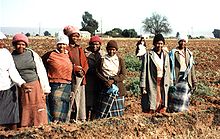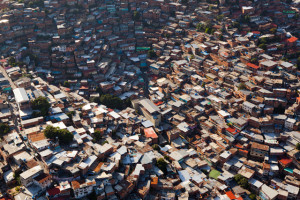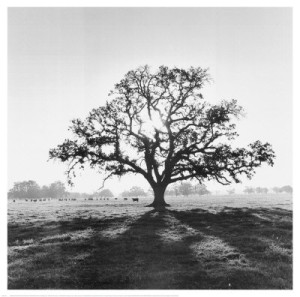Gilad Isaacs ~ South Africa’s 5 Million Working Poor
In a study of the South African labour market prepared as part of broader research on the national minimum wage, University of Cape Town economist Arden Finn attempts to determine the wage level at which, on average and all other things equal, a worker and his or her family could be brought up to the poverty line.
This is not a question easily answered, but R4,125 is the carefully qualified answer this study gives.
Finn’s study makes use of a new poverty line developed by the Southern Africa Labour and Development Research Unit (SALDRU) at UCT (forthcoming). Researchers Joshua Budlender, Murray Leibbrandt and Ingrid Woolard adopt the internationally established Cost of Basic Needs approach in order to quantify, in money terms, the most basic food items and other necessities that a person needs to live. They find that, in April 2015 rands, this amount is R1,319 per person per month.
But workers do not only support themselves, and wage income is not the only source of household income.
– See more at: http://groundup.org.za/article/south-africa-5-million-working-poor_3242
Olamide Udoma (Ed.) ~ “The Lagoon City First Of All Has To Add Qualities Instead Of Being The Next Parasitic Urban Development.”
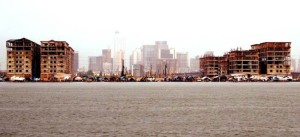
In an attempt to develop visionary perspectives for the future of Lagos, Nigerian experts and DASUDA (Dutch Alliance for Sustainable Urban Development in Africa) launched a Lagos Lab earlier this summer.
On Thursday 25th June DASUDA organised a seminar with stakeholders, possible shareholders and partners, to share and tested the results of the first Lagos Lab workshop. The week long workshop focused on the big themes of Water, Housing, and Mobility in relation to the meaning of the Lagoon and in the context of an explosive growing city.
The starting point of the seminar was the vision that the lagoon is the source of Lagos and can become the vibrant heart of a 21st century worldwide renowned metropolis.
Looking At Lagos
Rapid Population Growth: The population growth of Lagos picked up in the 70’s and 80’s and then even more since 1990. The mega-city’s population is now increasing by 70 people each hour and with an average age of its citizens of 19 years the existing population of 23 million will double within one generation.
Urban Pressure On The Water Edge: The expanding city is both moving outwards in a vast sprawl and inward pressing the urban boundaries into the lagoon where floating villages exist like Makoko and reclaiming land has become the norm.
Read more: http://futurecapetown.com/future-lagos
Thomson Reuters Foundation ~ Latin American Governments Fail To Tackle Booming Urban Slums: Report
BOGOTA (Thomson Reuters Foundation) – Latin America’s booming urban slums look set to continue their rapid expansion as government housing policies fail to tackle an explosion in informal housing, legal experts said on Monday.
Some 113 million people across the continent — or nearly one in five people — live in sprawling slums which are fuelling inequality and social exclusion, they said in a report.
“State policies on housing — even those enshrined in the region’s constitutions — have not been able to respond to the rise of urban populations…,” the study said.
Mass migration from rural to urban areas from the 1950s onwards means 80 percent of Latin America’s population of around 600 million now live in cities — a higher number than in any other region in the world.
The report examines housing legislation and policy in 11 countries, including Latin America’s largest economies — Brazil, Mexico, Chile, Colombia and Argentina.
Read more: http://www.nytimes.com/latam-housing.html
Patrick Barkham ~ Introducing ‘Treeconomics’: How Street Trees Can Save Our Cities
Rustlings Road is aptly named. The street in Sheffield is lined with mature lime trees. Their whispering leaves are brilliant green in spring, then cast cool, dappled shade in summer and turn bright yellow in the autumn. But Sheffield city council wants to prune the street, and a dispute about 11 lime trees has turned into a citywide campaign, with more than 10,000 people urging the council to halt its roadside felling. I has also sparked a broader debate about what 36,000 street trees bring to a place that claims to be the most wooded industrial city in western Europe.
This tussle shows how urban trees are both treasured and in jeopardy like never before – beset by disease and spurious insurance claims, and too readily felled by cash-strapped local authorities which only see their potential cost rather than their contribution to climate, public health and even the wealth of a city. Ever since Roger Ulrich discovered in 1984 that hospital patients appear to recover more quickly from surgery in rooms with green views, a growing body of scientific evidence has demonstrated the health – and wealth – benefits of trees in cities.
Read more: http://www.theguardian.com/cities/treeconomics
Margot Leegwater ~ Sharing Scarcity: Land Access And Social Relations In Southeast Rwanda
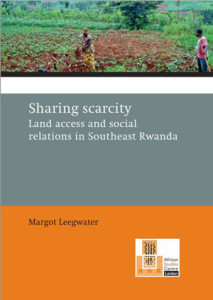 Land is a crucial yet scarce resource in Rwanda, where about 90% of the population is engaged in subsistence farming, and access to land is increasingly becoming a source of conflict. This study examines the effects of land-access and land-tenure policies on local community relations, including ethnicity, and land conflicts in post-conflict rural Rwanda. Social relations have been characterized by (ethnic) tensions, mistrust, grief and frustration since the end of the 1990-1994 civil war and the 1994 genocide. Focusing on southeastern Rwanda, the study describes the negative consequences on social and inter-ethnic relations of a land-sharing agreement that was imposed on Tutsi returnees and the Hutu population in 1996-1997 and the villagization policy that was introduced at the same time. More recent land reforms, such as land registration and crop specialization, appear to have negatively affected land tenure and food security and have aggravated land conflicts. In addition, programmes and policies that the population have to comply with are leading to widespread poverty among peasants and aggravating communal tensions. Violence has historically often been linked to land, and the current growing resentment and fear surrounding these land-related policies and the ever-increasing land conflicts could jeopardize Rwanda’s recovery and stability.
Land is a crucial yet scarce resource in Rwanda, where about 90% of the population is engaged in subsistence farming, and access to land is increasingly becoming a source of conflict. This study examines the effects of land-access and land-tenure policies on local community relations, including ethnicity, and land conflicts in post-conflict rural Rwanda. Social relations have been characterized by (ethnic) tensions, mistrust, grief and frustration since the end of the 1990-1994 civil war and the 1994 genocide. Focusing on southeastern Rwanda, the study describes the negative consequences on social and inter-ethnic relations of a land-sharing agreement that was imposed on Tutsi returnees and the Hutu population in 1996-1997 and the villagization policy that was introduced at the same time. More recent land reforms, such as land registration and crop specialization, appear to have negatively affected land tenure and food security and have aggravated land conflicts. In addition, programmes and policies that the population have to comply with are leading to widespread poverty among peasants and aggravating communal tensions. Violence has historically often been linked to land, and the current growing resentment and fear surrounding these land-related policies and the ever-increasing land conflicts could jeopardize Rwanda’s recovery and stability.
Full text book: http://www.ascleiden.nl/news/sharing-scarcity
Paul A. Jargowsky ~ Architecture Of Segregation
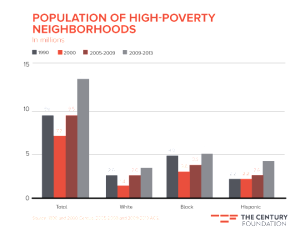 Over the past year, scenes of civil unrest have played out in the deteriorating inner-ring suburb of Ferguson and the traditional urban ghetto of inner-city Baltimore. The proximate cause of these conflicts has been brutal interactions between police and unarmed black men, leading to protests that include violent confrontations with police, but no single incident can explain the full extent of the protesters’ rage and frustration. The riots and protests—which have occurred in racially-segregated, high-poverty neighborhoods, bringing back images of the “long, hot summers” of the 1960s—have sparked a national conversation about race, violence, and policing that is long overdue.
Over the past year, scenes of civil unrest have played out in the deteriorating inner-ring suburb of Ferguson and the traditional urban ghetto of inner-city Baltimore. The proximate cause of these conflicts has been brutal interactions between police and unarmed black men, leading to protests that include violent confrontations with police, but no single incident can explain the full extent of the protesters’ rage and frustration. The riots and protests—which have occurred in racially-segregated, high-poverty neighborhoods, bringing back images of the “long, hot summers” of the 1960s—have sparked a national conversation about race, violence, and policing that is long overdue.
Something important, however, is being left out of this conversation: namely, that we are witnessing a nationwide return of concentrated poverty that is racial in nature, and that this expansion and continued existence of high-poverty ghettos and barrios is no accident. These neighborhoods are not the value-free outcome of the impartial workings of the housing market. Rather, in large measure, they are the inevitable and predictable consequences of deliberate policy choices.
Read more: http://apps.tcf.org/architecture-of-segregation
